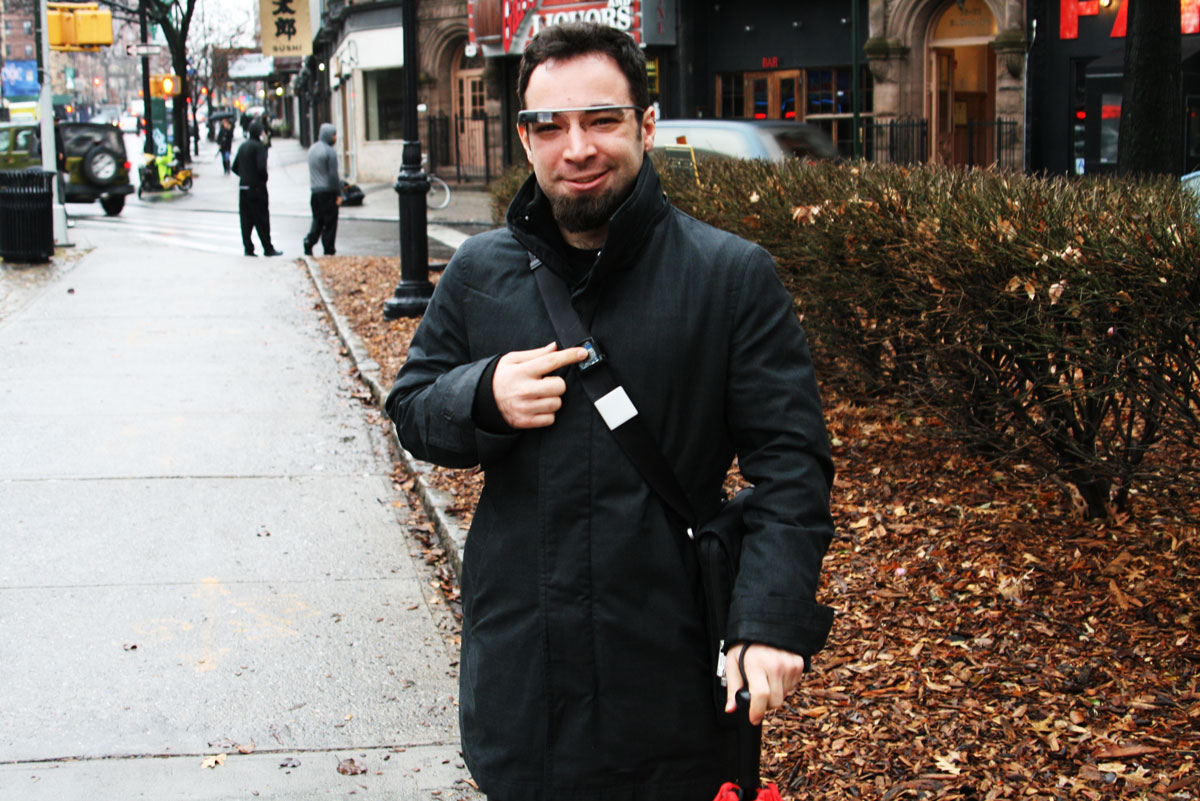If Google Glass takes off when it becomes a consumer product, Noah Zerkin and his partner Sam Force have bet there will be a strong market for a device that gives users a more natural way to interface with Glass and other heads-up displays. They launched Wearpoint this year, and their first product, Tact, will allow users to interface with Glass without touching the frame.
Hardware accelerator HAXLR8R has bet on the team as well. The accelerator provided them with an initial round of seed funding, work space and assistance networking with manufacturers in Shenzhen, China. Wearpoint’s presentation at the accelerato’s recent demo day was covered on GigaOm along with several other hardware startups.
“Google did the right thing by putting the viewing device by the correct sensory organ,” Zerkin said, but the first accessory people will want for the product to go mainstream will be a control closer to the hand. That’s Tact, designed as a clip. If user prefer, Tact can be mounted on a band like a wristwatch, but Zerkin thinks many users will want to mount it on their pocket or belt.
This is what Tact will look like, though these photos are based on renderings from an industrial design by New York fashion design company Nooka. The current prototype is much bulkier, but that’s mostly due to a battery that’s larger than they need:

Here’s how Tact will work:
- Users will configure an app for Tact on the same phone that Google Glass uses to connect to the Internet. It can be configured either as a trackpad or as Glass specific.
- Tact is just for input, so it won’t have any sort of screen, which means it needs less power than standalone devices.
- It will use Bluetooth Low Energy to interface with Glass and the phone, making it consume less of the phones battery.
- For now, Zerkin plans to charge the device via micro-USB, though their is space in the design to use a wireless charging coil.

Left: 3D printed industrial design of consumer product. Right: the latest prototype. The one demo’ed earlier this month.
Zerkin, 33, is a Brooklyn native, currently working out of his home in Park Slope when he’s not in China. He describes himself as a hardware hacker, not an engineer, as he developed his skills himself.
Though he is working on Wearpoint full time now, his most recent employer was Manhattan’s SuperTouch Group, which makes large scale interactive displays. He’s concentrating on the technology side of the company while his partner, Sam Force, works on the Business Development side from Seattle.
Zerkin’s goal for Wearpoint is that its first product does well enough that they can move on, funded by the success of the first but again in the hardware space.
In fact, he already has the work started on their next product. If you’ve seen Ender’s Game, you get some sort of clue of what Zerkin would like to work on next in that scene where Harrison Ford‘s character controls the young men playing anti-gravity war simulation with a device on his hand.
Zerkin has been working on a similar device using InvenSense’s MPU-6050 motion tracking chip. He’ll understand it a little better if Tact goes to market, as they have included the chip in the design for their first wearable.
Join the conversation!
Find news, events, jobs and people who share your interests on Technical.ly's open community Slack
